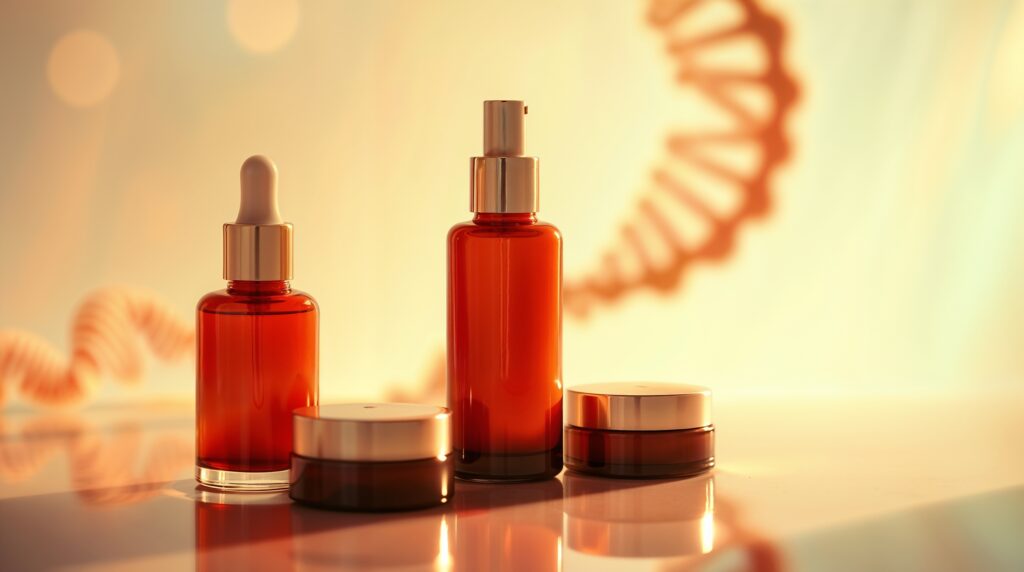The Line Between Skincare and Color Is Blurring—Fast
Today’s beauty consumer no longer distinguishes between function and finish. Foundations are expected to hydrate. Primers should soothe. Pressed powders must support the skin barrier. In this new landscape, aesthetics alone no longer define success. Instead, products must offer measurable, skincare-grade benefits while delivering the seamless payoff of high-performance makeup.
This shift—commonly referred to as the skinification of makeup—isn’t theoretical. It’s being tracked across every major beauty market. According to Grand View Research, the global hybrid makeup market exceeded $4 billion in 2023 and is projected to grow at a compound annual rate of 8.4% through 2030. What’s driving this expansion? Formulations that treat the skin as thoughtfully as a serum or moisturizer while performing like cosmetics always have.
The real challenge for formulators is figuring out how to deliver on these dual expectations without compromising product texture, stability, or visual appeal. The good news? A material science solution already exists—and it begins at the pigment level.
The Skinification Dilemma: Balancing Function, Feel, and Finish in Hybrid Products
Bringing skincare benefits into makeup products is easier said than done. Most active ingredients used in skincare—ceramides, hyaluronic acid, peptides—aren’t structurally optimized for makeup systems. They present real hurdles in formulation: poor solubility in oil or silicone phases, crystallization risks, destabilization under high temperatures, and incompatibility with emulsification systems. This makes them particularly difficult to use in formats like stick foundations, water-in-oil emulsions, or silicone-free primers.
In parallel, consumer expectations have shifted toward minimalism and transparency. There’s increased scrutiny on ingredient sourcing, process sustainability, and INCI simplicity. That puts pressure on formulators to avoid synthetic coating agents, harsh solvents, and overly complex formulation systems—without sacrificing payoff, performance, or sensorial elegance.
So the task is threefold: make the formula look good, make it feel good, and make it do good for the skin. And do it all while maintaining global regulatory compliance and meeting natural origin requirements. For any formulator working on next-gen makeup, this is the new baseline—not the exception.
Bloom Series (CER) – A Functional Powder That Thinks Like Skincare
To simplify this complex equation, Uni-Powder developed the Bloom Series (CER)—a high-performance line of surface-treated pigments that integrates Ceramide NP and Jojoba Ester as dual skincare-active modifiers. Unlike traditional pigment treatments based on synthetic silanes or esters, Bloom Series uses biomimetic, plant-based surface modifiers that deliver measurable skin benefits within the color system itself.

Ceramide NP is structurally identical to the ceramides naturally found in the stratum corneum. Its inclusion improves the skin’s water-retention capacity, enhances barrier resilience, and reduces transepidermal water loss (TEWL)—a critical metric for skin health. Jojoba Ester, meanwhile, mimics the structure of human sebum, improving pigment affinity to skin and helping form a breathable, hydrating film on the surface.
What’s more, Uni-Powder’s treatment process is entirely physical—no solvents, no residual by-products. The resulting pigments carry COSMOS-approval and a natural origin index of 1.0 per ISO 16128, meeting compliance requirements across China, the EU, and North America. They offer clean-label functionality without formulation sacrifice.
Where Claims Meet Data: Validating the Benefits of Skin-Caring Pigments
The promise of hybrid cosmetics rests not just on marketing—but on measurable skin benefits. That’s where Uni-Powder’s Bloom Series stands out. Beyond surface-level treatment, Bloom CER pigments have undergone detailed biological testing that quantifies their impact on skin health. Two key studies highlight its dual-action moisturizing and soothing capabilities.
► Moisturizing Effect: Promoting the FLG Gene
Filaggrin (FLG) is a protein essential to skin barrier integrity and hydration. A decline in FLG expression is associated with dry, flaky, and barrier-compromised skin. In keratinocyte cell assays, Bloom CER-treated pigment samples at concentrations of 0.0031% and 0.0063% (m/V) significantly increased FLG gene expression compared to the untreated control (p < 0.05). The increase followed a dose-dependent trend—meaning the higher the concentration, the greater the stimulation of this barrier-supportive gene.
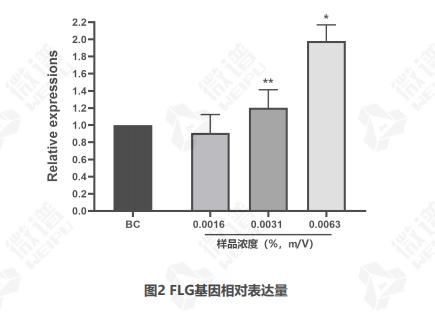
This mechanism suggests that Bloom CER isn’t merely coating the skin to feel moisturizing—it’s encouraging the biological foundation for long-term hydration and improved barrier function. In the context of makeup, this provides formulators with a material that does more than sit on the surface—it supports the physiology beneath.
► Soothing Effect: Reducing Inflammatory Response
In a second study, the same pigment treatments were evaluated for their ability to suppress inflammatory signaling. Keratinocyte cultures were exposed to CER-treated powders at concentrations of 0.0016%, 0.0031%, and 0.0063% (m/V). At each concentration, the release of pro-inflammatory cytokines TNF-α and IL-6 was significantly reduced compared to the negative control group (p < 0.05). This shows that Bloom CER actively supports a calmer, less reactive skin environment—a benefit particularly relevant for sensitive-skin consumers or those using foundation daily.
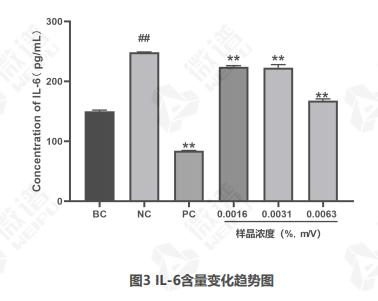
Taken together, the data affirms that Bloom Series pigments function not just as carriers of color, but as biologically active materials capable of delivering skincare-grade performance in color formulations. This is a major advancement in how hybrid cosmetics can be designed: by embedding benefit at the material level, formulators can reduce complexity and increase performance from the first ingredient forward.
► Barrier Repair: Enhancing Skin Resilience at the Cellular Level
In vitro testing using HaCaT human keratinocyte models demonstrated that Bloom CER pigments support skin barrier repair at the cellular level. When applied at 1.0% concentration in a Bloom Silicone Oil-Free Liquid Foundation formula, the treated pigments significantly accelerated the healing rate of keratinocyte cultures compared to the negative control group. The result was statistically significant (p < 0.01), confirming that the formulation aided in skin regeneration—an essential marker of barrier repair functionality. This performance goes beyond superficial moisturization, indicating that the pigment system actively contributes to epidermal resilience.
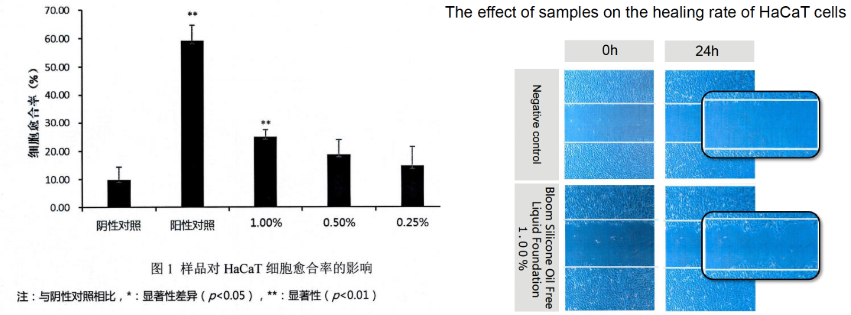
From a formulation perspective, this benefit is highly relevant for products intended for frequent use or for consumers with sensitive, dry, or aging skin. As the skin barrier becomes increasingly compromised by environmental stress, blue light exposure, and over-cleansing, the ability to embed true barrier-repair properties into a makeup formula gives brands a competitive edge. Rather than relying on added actives in the water phase, Bloom CER lets formulators deliver clinically relevant repair benefits through the pigment system itself—simplifying development while elevating product performance.
► Skin Glow and Hydration: A Radiant Finish With Biological Depth
One of the most consumer-visible benefits of Bloom CER is its ability to enhance skin glow while delivering real hydration. In controlled foundation formula comparisons using CER-treated versus standard AS-treated pigments, the Bloom CER formulas showed higher gloss, better skin affinity, improved long-wear hydration, and a more luminous finish. These results were confirmed using gloss and haze measurement under D65 light after 24 hours. The CER formulations produced a softer, more even visual film that appeared healthier and more radiant on the skin.
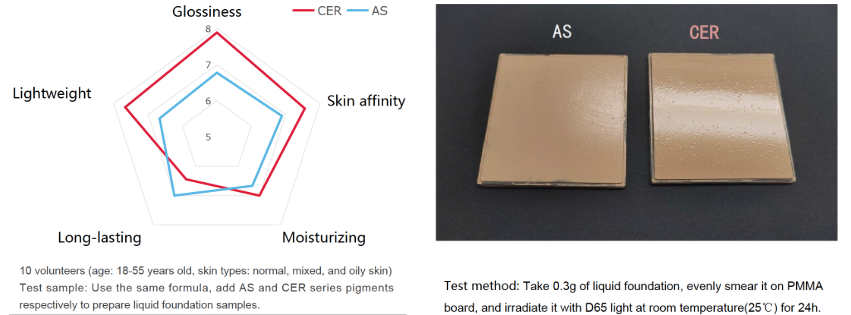
But beyond appearance, Bloom CER contributes to functional hydration. By promoting FLG gene expression (as detailed earlier), it actively supports the skin’s ability to retain water and maintain moisture levels over time. In use, this means that hybrid makeup created with Bloom Series not only offers a dewy, well-lit look—it helps the skin feel more comfortable and conditioned throughout the day. This synergy between cosmetic effect and physiological benefit is what modern consumers are increasingly demanding—and formulators can now deliver it without adding complexity to the formula.
► Dispersibility: Even Performance in the Most Demanding Systems
Dispersibility is a non-negotiable property for color cosmetics. Uneven pigment dispersion leads to streaking, creasing, clumping, and compromised wear time. In internal dispersion tests, Bloom CER pigments demonstrated excellent compatibility across a wide range of low polarity oils, including synthetic squalane, GTCC (caprylic/capric triglyceride), and silicone oil (5cst). When centrifuged after sonication, the pigments maintained a uniform dispersion, particularly in squalane and GTCC—two common carriers in high-end formulations. Visual and microscopic analysis confirmed that Bloom CER maintained a smooth, even particle distribution without sedimentation or floating.

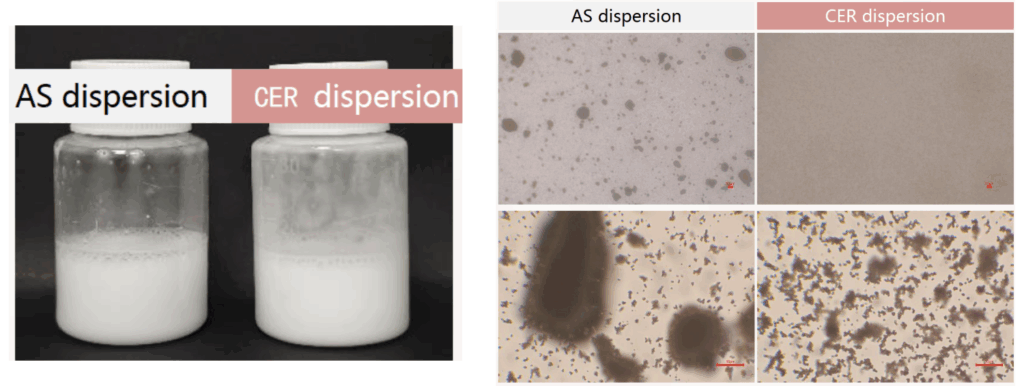
This performance is especially beneficial in stick foundations, water-in-oil emulsions, and silicone-free systems, where pigment wetting and phase stability are often difficult to manage. Because Bloom CER pigments disperse evenly without the need for additional dispersion aids or emulsifiers, they simplify the formulation process and increase flexibility for different base systems. Formulators can achieve clean visuals and uniform skin tone correction, even in minimalist or high-pigment-load products. This makes Bloom CER an ideal foundation for building hybrid makeup across varied textures and delivery formats.
► Stability: Reliable Under Heat, pH, and Hydrophobic Conditions
In stability testing simulating real-world formulation and storage conditions, Bloom CER pigments demonstrated excellent resistance to heat, acid, and alkali environments. When exposed to 85°C for two hours in aqueous and oil systems, the pigments retained their structure and dispersion. Even after shaking and centrifugation, no sedimentation or particle aggregation was observed. This level of thermal stability is essential for ensuring batch consistency, long shelf life, and clean label performance across climate zones.

Additionally, Bloom CER showed strong hydrophobicity, with consistent oil resistance and water rejection even after mechanical agitation. These traits are vital for long-wear applications like pressed powders and stick foundations, which must maintain integrity during storage and on the skin. Unlike ceramides in their raw form—which often require heating and special emulsifiers to remain stable—Bloom’s proprietary treatment method stabilizes ceramides at the pigment level. This makes them easier to formulate with, more predictable in scale-up, and compatible with pH-sensitive or preservative-free systems.
Real-World Formats: Where Bloom Series Makes the Difference
The versatility of Bloom Series is part of what makes it a powerful tool for formulators. In liquid foundations, Bloom-treated pigments help reduce cakiness, improve glide, and deliver a subtle glow while enhancing hydration. In loose and pressed powders, they act as a functional filler—reducing the need for added emollients while improving oil control and adhesion.
In primers and concealers, where film uniformity and flexibility are critical, Bloom pigments create a balanced skin surface that holds up under wear and environmental stress. Their natural skin affinity minimizes patching or cracking, particularly in dry or mature skin types.
Each pigment in the Bloom CER family is designed for precise tone matching and can be seamlessly integrated into minimalist base formulas or layered performance systems. The result is a hybrid cosmetic product that performs with integrity across skin types, climates, and lifestyles.
Why This Shift Matters: The New Rules of Color Formulation
The consumer no longer accepts a tradeoff between immediate payoff and long-term skin health. They want foundation that nurtures, concealer that repairs, and primers that protect. Publications from Vogue and WWD echo the rise in consumer demand for products that go beyond aesthetics to deliver real functional outcomes, citing the rapid uptick in skin-makeup hybrids across major brands and global markets.
According to Mintel, younger consumers—especially Gen Z—prioritize “value, sustainability, and skinification” when selecting color products. The result is a measurable pivot toward multi-functional, biologically active cosmetics—and brands that fail to innovate risk obsolescence in this new value system.
Formulators who understand this shift and respond with technical precision—using ingredients like Bloom CER—are better equipped to bring hybrid concepts to life, without the typical formulation headaches. The pigment is no longer just a carrier for color. It’s a delivery vehicle for care.
Redefining What Makeup Can—and Should—Do for Skin
The future of makeup formulation demands more than coverage—it requires care. As the industry evolves to embrace performance-driven, multifunctional hybrid systems, cosmetic formulators need solutions that are scientifically robust, regulatory-compliant, and formulation-flexible.
Uni-Powder’s Bloom Series (CER) offers that rare convergence: a pigment treatment platform that simplifies your process while elevating your product’s value. Whether you’re designing a next-gen stick, a breathable balm, or a hydrating loose powder, Bloom allows you to build better—starting at the surface.
Ready to formulate with intention? Contact Deveraux Specialties to request samples, technical documents, or formulation support tailored to your application.
Resources
- Grand View Research. (2024). Hybrid Makeup Market Size, Share & Trends Analysis Report. Retrieved from https://www.grandviewresearch.com/industry-analysis/hybrid-makeup-market-report
- Vogue. (2025). Skincare-Makeup Hybrids Are the Future of Beauty. Retrieved from https://www.vogue.com/article/skin-care-makeup-hybrids
- WWD. (2025). Skin Care-Makeup Hybrids Lead Beauty Innovation. Retrieved from https://wwd.com/beauty-industry-news/beauty-features/skin-care-makeup-hybrid-launch-beauty-product-1236908298/
- Mintel. (2024). The Intersection of Value, Sustainability, and Skinification in Colour Cosmetics. Retrieved from https://www.mintel.com/insights/beauty-and-personal-care/the-intersection-of-value-sustainability-and-skinification-in-colour-cosmetics/






